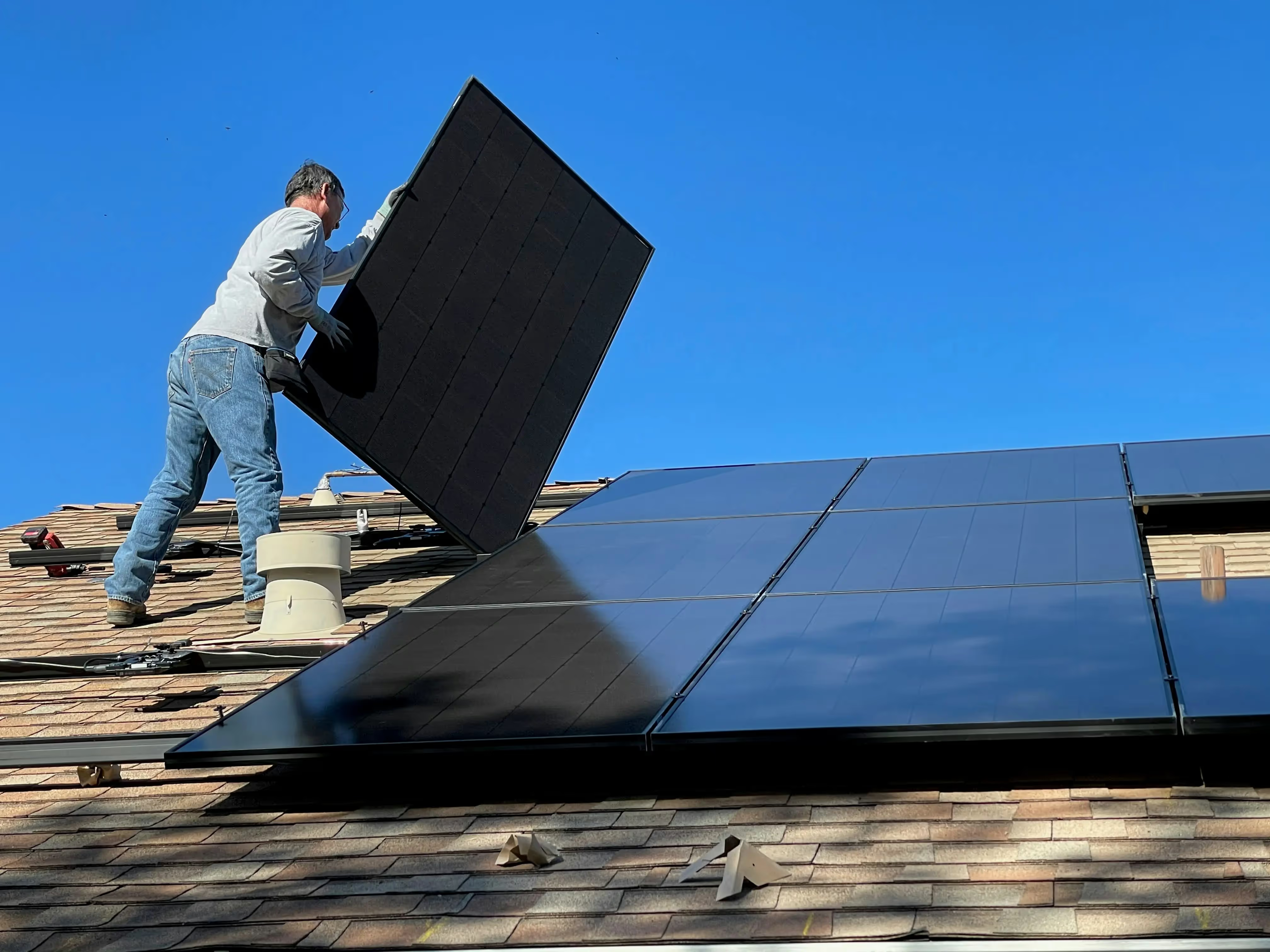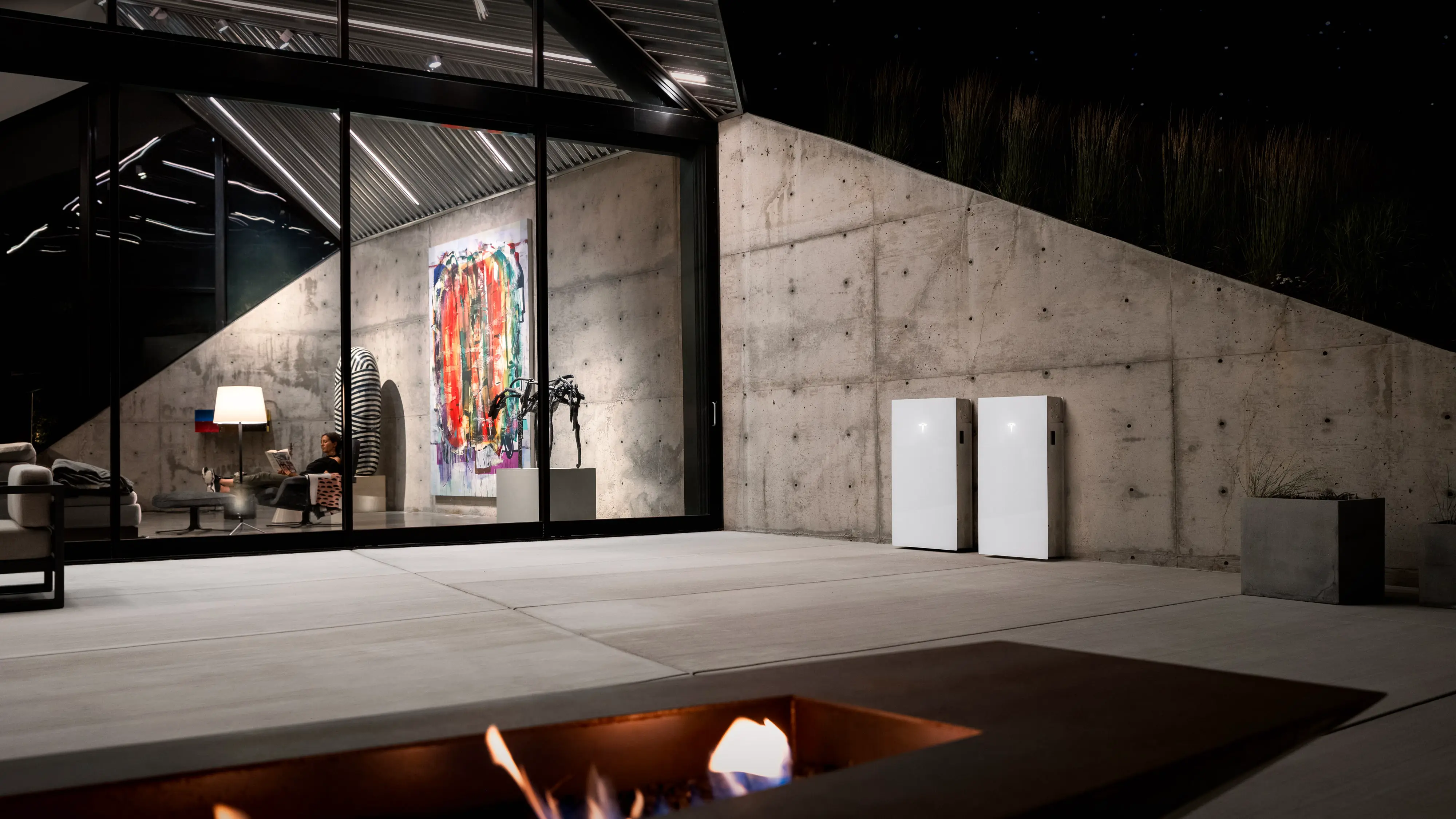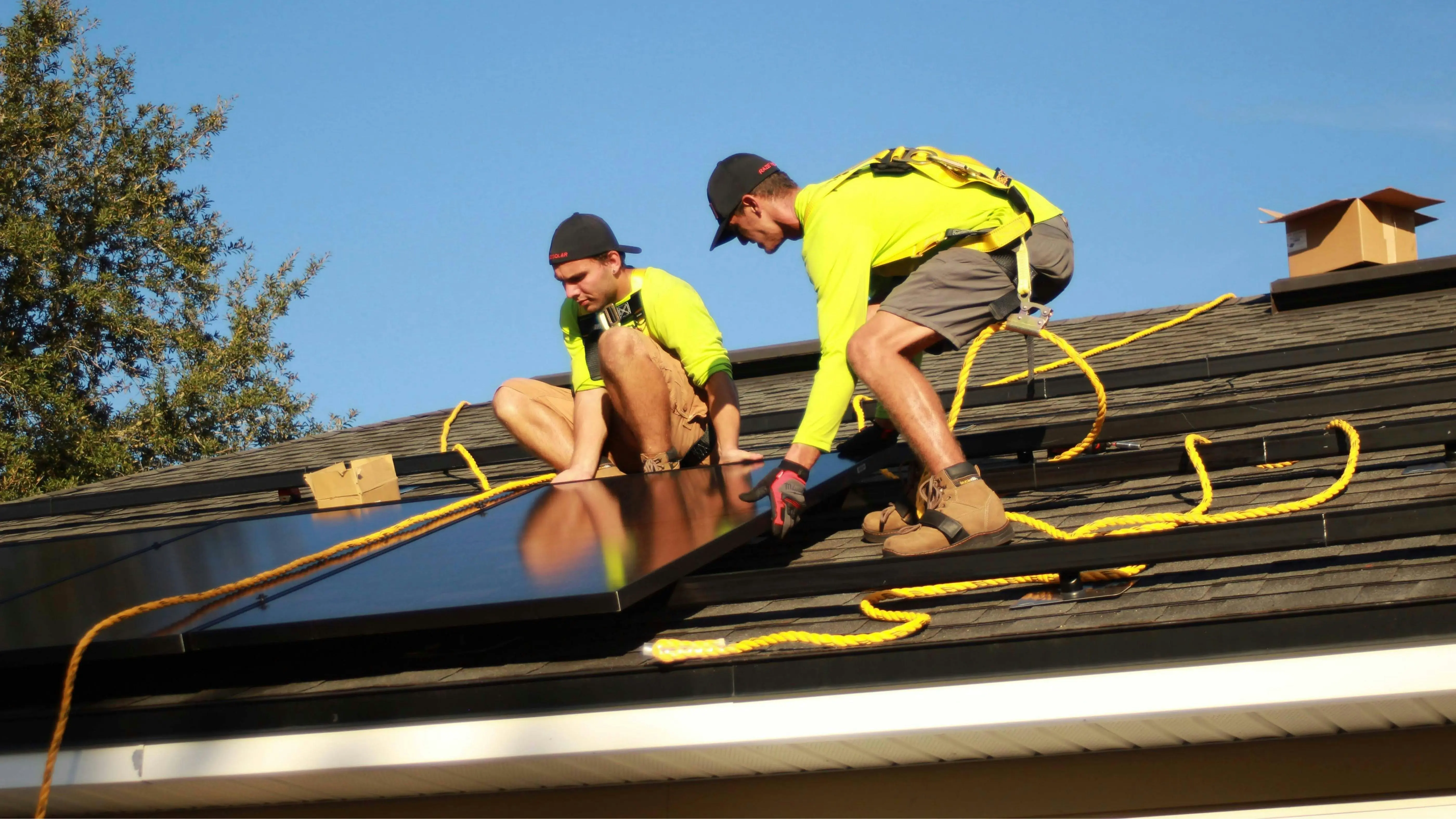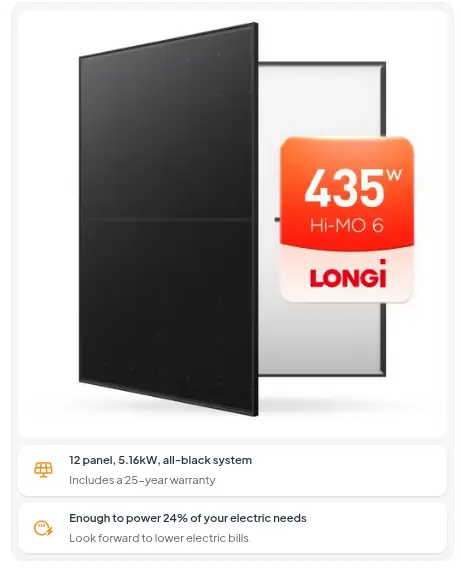
A solar array refers to any system that uses more than 1 panel. Installers typically refer to large scale solar panel projects as solar arrays but essentially, any system with more than 1 panel can be referred to as a solar array.
The photovoltaic modules capture sunlight which produces electricity. Electricity produced by solar panels is direct current (DC). In order for it to be used in your home, it needs to be converted to alternating current (AC).
The job of the inverter is to convert this DC electricity into AC. Once converted, the electricity can be funneled into your home or sold back to the grid. If you have batteries (energy storage systems) then excess solar energy can be used to charge them, most commonly thaey are charged using DC straight from the panels, so the inverter won't convert it to AC if it isn't needed in the home and there is spare capacity in the battery to be charged.
There are 3 main types of inverter to choose from and choosing the right one can drastically improve the energy production of your solar array over time.
These are usually used on low budget installations. As the name suggests, a single string inverter connects a group of solar panels in a system.
Whilst this is the cheapest option, there are definitely downsides. The main one being that if a single panel's efficiency drops due to being dirty, shaded or faulty, the efficiency of every panel in the string will drop too, unless there are DC Optimisers attached to each panel (but these cost extra and are not a standard piece of equipment for every job, so you need to specify them).
Micro inverters are the next step up from string inverters. Rather than your whole solar array being connected to a single string inverter, you can attach micro inverters to individual panels.
Essentially, this means that if one panel drops in efficiency for whatever reason, none of the other solar panels in your array will be affected. A system using micro inverters rather than a string inverter will be a lot more efficient over time.
Hybrid inverters are used when you have / want battery storage as well.
If you plan to use a solar storage battery or sell energy back to the grid, you'll want to use hybrid inverters as part of your solar array.
We’ve written a full guide to solar inverters here.

The cost of your solar array is going to depend on a range of factors.
A standard 12 panel 5.16kW system is suitable for the many small-medium properties. Total cost including installation, but without any upgrades (such as panel optimisers or a battery) will be around £6,000 with dwellow.

You'll be able to use electricity as it's produced, with any excess exported to the grid via the Smart Export Guarantee, as long as the installation is done by a MCS accredited installer. Overall, you could expect to save around £600-£700 per year for a 12 panel south-facing array somewhere like London, meaning the payback period for the system is going to be approximately 9 years.
However, we usually suggest incorporating a small storage battery as a minimum. This will increase the price to just over £8,000 and the payback period will therefore increase.
But, you'll see a huge jump in electricity self-sufficiency. Without a storage battery, you can expect your self sufficiency rating for electricity to be around 20%. Incorporating even a small storage battery sees this figure jump dramatically to around 50% for the scenario set out above.
You can read our full guide to solar panel costs here.
Alternatively, you can get quotes on your solar array by using our clickable solar panel tool here.
There, you’ll be able to build your perfect system and toggle between different battery options (5.3kW, 10.6kW or 15.9kW) with fixed prices on-screen within a matter of minutes.
Before investing in a solar panel array, you'll want to check your roof's suitability.
The perfect setup is a roof with a tilt angle of 30° and facing due south.
Your roof doesn’t have to be exactly 30° and due south, but as you can see from this graphic produced by the Energy Saving Trust, efficiency of panels is reduced for all other roof setups.
Alongside this, you'll want to make sure that where your solar array is installed isn't shaded during peak hours of energy production (10am-4pm). If your solar array is shaded during these times, the system won’t be working to anywhere near its full potential.
We’ve got a full guide covering roof suitability for a solar array here.

How many panels you need in your solar array will depend on:

If you’re looking to increase your self sufficiency, you can add more panels to your solar array, or, add a solar storage battery.
Our engineers can hook up a solar storage battery directly to your system. So, any excess energy produced gets stored, rather than being sold back to the grid only for you to buy it back at a higher price later.
There are 3 battery types to choose from with our online journey (and prices):
The reality is that different manufacturers will have differnt incremental battery sizes, so jumping by exactly 5kW isn't always possible, but for our prefered manufactuers it is possible.
We also have the additional option of upgrading to solar array optimisers.
Use our clickable solar panel system tool here. There you can toggle between different options including optimisers and see prices for your system with and without a solar storage battery.
The savings you’ll see from your solar array will depend on a few factors, including:
A standard 5.16kWh 12-panel solar panel system is likely to set you back around £6,000, without a solar storage battery, as stated above. You’ll use some electricity as it’s produced, with any excess being sold back to the electricity grid via your distributor.
Overall, this is likely to save the average household approximately £650 per year, meaning the payback period for a typical solar array is just 9 years.
This is where choosing your installer is important.
If you use an installer that’s not registered with the Microgeneration Certification Scheme (MCS) or, if you fit your solar array on a DIY basis, you won’t be able to apply for the Smart Export Guarantee scheme. This is going to mean you lose out on monthly payments amounting to approximately £400 per year!
Solar panels are a great investment. By installing a solar array, you’ll see a payback period that is dependent on how much energy you use, the size of array, your tariff and batteries etc, but often the payback period can be in single figure number of years.
If you're unsure how much your exact system is likely to cost, use our clickable solar panel quotation tool here. Or, speak to our solar experts here if you have any questions.
Try our free quote tool. You'll have your personalised quote in under a minute.